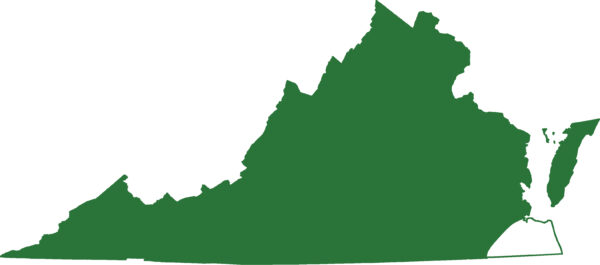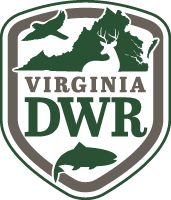© Scott Bolick
Patternless Spotted Salamander. © Will Lattea
The clear, white or intermediate color morphs of Spotted Salamander egg masses is dependant on the presence of proteins in the outer jelly layers. © Steven Johnson
Fact File
Scientific Name: Ambystoma maculatum
Classification: Amphibian, Order Caudata, Family Ambystomatidae
Size: Up to 9 inches
Identifying Characteristics
Like all mole salamanders the spotted salamander is oviparous and lays their eggs within clumps underwater which hatch into larvae with three pairs of external gills (one of the most famous mole salamanders is the axolotl) with large caudal fins which stretch from the nape of their neck to their tails allowing for easy movement in the water; after they hatch the larvae will grow their first set of limbs with four toes on the front limbs and five on the hind legs. During metamorphosis this salamander will lose their gills and fins and their eyes will develop limbs; as their skin grows thicker and their lungs develop for a terrestrial existence.
The spotted salamander is between 5.9-9.8 inches in length with females being large than males on average; like most mole salamanders they are a stout species with thick limbs and wide snouts for burrowing. The main color of the spotted salamander is their black to dark brown bodies which are highlighted by two rows of unevenly spaced 24-45 yellow-orange spots that run from the head to the tail with the spots near the head often being more orange than the spots in other locations on the body. The underside of this salamander is a diluted pink or soft grey color. The only sexual dimorphism found between the females and males is that the girls are larger and often have brighter colored spots; it should be noted that unspotted individuals do exist of this species but they are quite rare. As larvae the spotted salamander is a light brown to yellow color with a spattering of dark spots and external gills which they lose after 2 to 4 months when they metamorphize and leave the water and reproduce when they are 2-3 years of age and gain their trademark spots a week after their metamorphization.
Habitat
The spotted salamander also known as the yellow-spotted salamander is a member of the mole salamander family which are endemic to North America; These salamanders get their family name from their burrowing behaviors as they spend the majority of their life underground. The only times you see them in the water are during their juvenile stage and when they return to breed. They are typically found in mature deciduous forests with seasonal ephemeral vernal pools where they can breed; the seasonality of these ponds is preferable because it limits predation from fish whilst containing enough water for the larvae to mature; In general larger pools are preferable for spotted salamanders as more eggs are laid in them and the larvae have higher survival rates and higher concentrations of leaf litter are also preferable because as larvae the spotted salamander often is found in refuges within the vegetation under the leaf litter near where they were laid to hide from arboreal predators.
Diet
They are an opportunistic feeder on anything smaller than itself. They often prefer to feed on soft bodies organisms such as earthworms, snails and slugs but also are known to feed on millipedes, centipedes, insects and other invertebrates as well as on occasion algae and smaller salamanders. As larvae the spotted salamander is an aggressive generalist predator that feeds on small insects, zooplankton, and isopods; in the even of overcrowding the spotted salamander can become cannibalistic.
Distribution:
This species can be found from Texas to Nova Scotia Canada. They are found throughout Virginia, except for the lower region of the Eastern Shore and the southeastern corner. Outside of the breeding season which occurs between March and May the spotted salamander adults can often be found in burrows dug by small mammals often only a few centimeters under the surface within the well-drained soil of the forest floor. Spotted salamanders are fossorial which means that they spend most of their lives underground and rarely are seen at the surface unless it has recently rained, they are foraging, or they are breeding. This is one of the species known to hibernate underground during the winter and will not surface from their burrows until early spring; typically the home range of a spotted salamander is 8-15 square meters in range; as they are a solitary species they will aggressive to other spotted salamanders within this range but it is unknown if they have any methods of marking their territory.

Did you know?
A unique trait of spotted salamander adolescence is that they are one of the only known vertebrates that have an endosymbiont microbe (disregarding mitochondria) in the form of the symbiotic algae that lives in and around them throughout their life. The green algae Oophila amblystomatis is key to the successful hatching rate of young spotted salamanders as the gelatinous matrix they are laid in that prevents the eggs from desiccating inhibits oxygen diffusion requiring the algae to be present to provide oxygen and nutrition to the eggs through photosynthesis and is further fed on the nitrogenous waste from the egg providing a mutually beneficial arrangement; this has led to the widely used herbicide Atrazine being quite deadly to young spotted salamanders as it kills the algae they rely on to breed.
Defense Mechanisms
To protect itself from predators the spotted salamander can detach it’s tail and regrow it when attacked and it can also secrete an off-white milky substance from its neck and back that is toxic when consumed and a mild skin irritant. Like other members of the mole salamander family the spotted salamander can easily regrow legs, tails, organs, heads or even parts of their brains when damaged. The spotted salamander is important to the local ecosystem and often a prey source of raccoons, newts, turtles and crayfish which can consume up to 90% of the eggs before they hatch; after hatching the larvae are prime targets for aquatic fish, birds and insects and as adults they are a primary food source for garter snakes and other carnivores.
Where to See in Virginia
Much like sea turtles the spotted salamander follows the same routes on their annual migrations from their burrows to their breeding pools during periods of cloud cover using landmarks to find the ponds in which they were originally laid; the migration period for these salamanders is often marked by a raise in temperature and humidity with hundreds and thousands of salamanders migrating during the same night to their breeding location. Often the males will migrate a little before the females and they will mate in the spring rains with the couples laying 100 eggs per clutch on various underwater plants in round clumps of egg masses that are 2.5-4 inches in length. There is a unique polymorphism in the egg colors of this salamander as one variety has an outer layer of water-soluble protein creating clear egg clumps and the other lays eggs that contain a hydrophobic protein that makes their eggs an opaque cream color; this variation in egg color is thought to be a response to the nutrient levels in the water in attempt to mitigate predation from other amphibian larvae. The eggs take about a month to hatch with the exact time depending on the water temperature.
Conservation
At the moment the spotted salamander is a species of least concern, but herbicides, and habitat destruction do threaten populations of the species. Most spotted salamander (over 90%) died before they metamorphize and leave their pool because of predators, disease or simply the pool drying up. The spotted salamander plays an important role in the biodiversity of their local ecosystem and are known to reduce insect pests such as mosquito populations in regions where the are prevalent.
Sources
Stout, N., Hammond G., 2007. Ambystoma maculatum. Animal Diversity Web. Accessed February 17, 2024 at https://animaldiversity.org/accounts/Ambystoma_maculatum/
n.p. 2024. Spotted salamander. Virginia Herpetological society. Accessed February 17, 2024 at virginiaherpetologicalsociety.com
Last updated: June 25, 2024
The Virginia Department of Wildlife Resources Species Profile Database serves as a repository of information for Virginia’s fish and wildlife species. The database is managed and curated by the Wildlife Information and Environmental Services (WIES) program. Species profile data, distribution information, and photography is generated by the Virginia Department of Wildlife Resources, State and Federal agencies, Collection Permittees, and other trusted partners. This product is not suitable for legal, engineering, or surveying use. The Virginia Department of Wildlife Resources does not accept responsibility for any missing data, inaccuracies, or other errors which may exist. In accordance with the terms of service for this product, you agree to this disclaimer.

